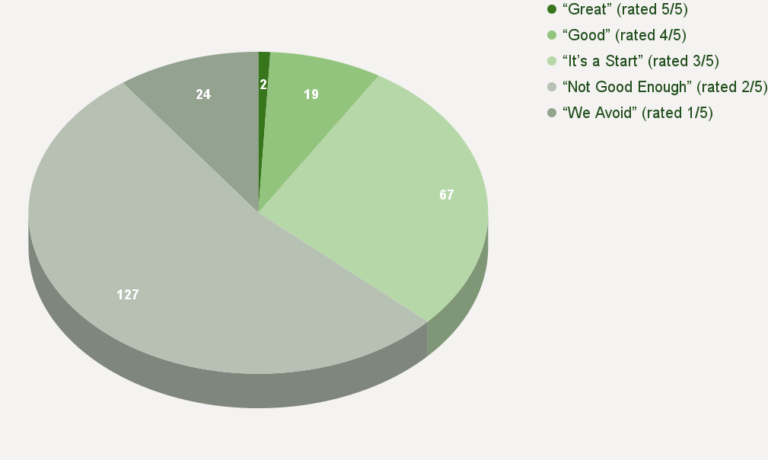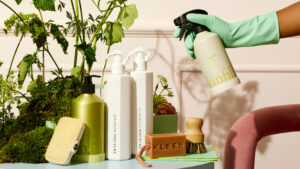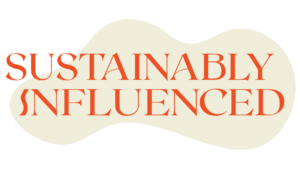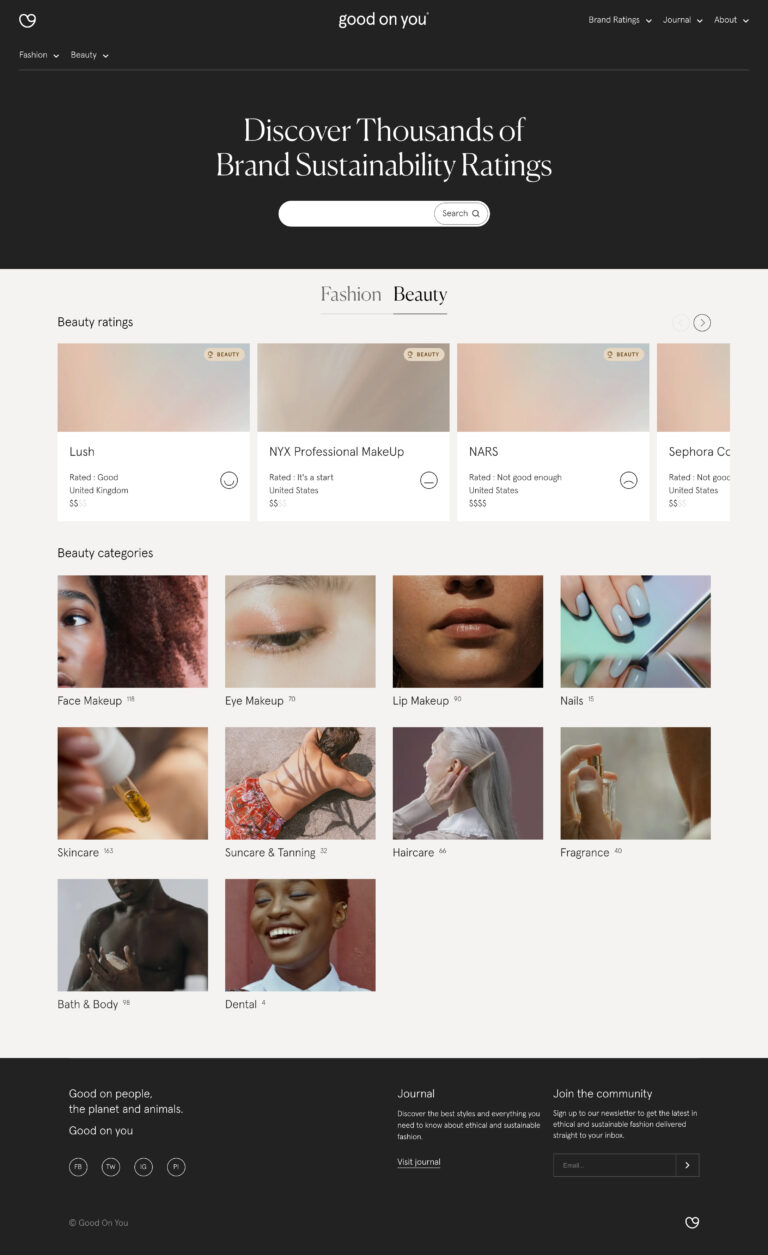The Launch of Good On You’s Beauty Section - Is It A Step Towards More Sustainable Beauty?
Bianca Foley
It’s time to take a closer look at the world of beauty—and no, we don’t just mean peeking into your makeup bag. For years, the beauty industry has put its best face forward, presenting itself as clean, glamorous , and trendsetting. But behind the scenes, things haven’t been quite so polished, especially when it comes to sustainability. Good On You, already known for its tough-love approach to rating fashion brands on their ethical and environmental practices, is here to shake things up. They’ve just launched a new Beauty Section, and it’s set to give consumers the lowdown on which beauty brands are truly doing good—and which are just putting on a show.
Let’s face it: the beauty industry has been dragging its feet when it comes to transparency and sustainability. Unlike fashion, where conversations around ethical production and environmental impact have been heating up for a decade, beauty brands have stayed largely out of the spotlight. But thanks to Good On You’s Beauty Sustainability Scorecard, there’s no hiding anymore. So why has the industry been so slow to get on board? And what makes this new rating system such a big deal? Keep reading to find out more…

Why Has Beauty Been So Slow to Clean Up Its Act?
You might wonder why an industry that’s all about looking good has struggled so much with doing good. The answer lies in its complex, behind-the-scenes operations. Beauty products involve countless layers of production, from growing raw materials like palm oil and mica (more on that later), to manufacturing, packaging, and shipping all over the world. Keeping track of all those steps is a nightmare. Plus, beauty brands have long hidden behind trade secrets, especially when it comes to their ingredients. Many don’t disclose exactly what goes into their products, leaving consumers in the dark about the true environmental and ethical impact.
For example, fragrance ingredients—those mystery components that make your favorite lotions and potions smell heavenly—are often lumped together under the term “fragrance.” Good On You’s research found that 90% of beauty brands use fragrance ingredients, but a whopping 72% don’t tell you what’s actually in them. That’s a lot of room for questionable chemicals and potential greenwashing.
Packaging is another major issue. From fancy glass bottles to single-use plastic sample sachets, beauty products often come wrapped in waste. Good On You found that fewer than 5% of brands use recycled materials in the majority of their packaging, and only 15% offer refillable options. That luxurious cream may feel great on your skin, but the leftover container isn’t doing the planet any favors.
Why Good On You’s Beauty Ratings Are a Big Deal
Now that Good On You has entered the beauty arena, we finally have a tool that pulls back the curtain on what’s really happening in the industry. Their Beauty Sustainability Scorecard looks at a whopping 239 beauty brands and breaks down how well (or not so well) they’re addressing key issues like ingredient transparency, packaging waste, labor practices, and animal welfare. The data speaks for itself: the beauty industry has a long way to go.
•Living Wages? Not So Much: A shocking 84% of beauty brands have taken no action to ensure living wages for workers in their supply chains. This means many of the people who help make your favorite products aren’t being paid fairly.
•Packaging Problems: While 40% of brands use some recycled materials, only a tiny fraction extend that practice across most of their product lines. And while refillable packaging is all the rage in sustainability marketing, it’s mostly hype—just 2% of brands are tracking whether customers actually reuse the packaging.
•Animal Testing: Everyone loves a cruelty-free label, but 78% of brands have no certification to prove they aren’t testing on animals. So, while some brands may claim to be “cruelty-free,” there’s often no way to verify it.
Good On You’s ratings are based on publicly available information, which means there’s no room for brands to hide. If they’re not disclosing their practices, it’s a red flag—and something consumers can now factor into their buying decisions.
Why This Matters for Beauty Lovers Everywhere
So, why should you care about all this? After all, can’t we just enjoy our beauty products without stressing about sustainability? Well, yes and no. Consumers are becoming more aware of the impact their purchases have on the environment, animals, and workers. We want our beauty routines to be as kind as they are effective. But the beauty industry hasn’t made that easy. Greenwashing—where companies make exaggerated or misleading claims about being eco-friendly—has been rampant. That’s why Good On You’s new rating system is so important. It cuts through the marketing fluff and gives you the real deal on which brands are walking the walk.
By introducing these ratings, Good On You is helping consumers make more informed choices. Whether you’re committed to living a zero-waste lifestyle or just starting to think about how your products are made, this transparency is empowering. And it’s a wake-up call for the beauty industry: the days of hiding behind pretty packaging are over.

The Beauty Industry’s Road to Real Change
The beauty industry still has a lot of work to do, but the launch of Good On You’s Beauty Section is a step in the right direction. Some small, forward-thinking brands are leading the charge, focusing on circular business models, refillable packaging, and transparent ingredient sourcing. But for the majority of brands, the scorecard paints a less-than-flattering picture.
While only 2% of brands are offering substantial refillable options, and living wage efforts remain almost non-existent, there are bright spots. 9% of brands are proudly vegan, and a growing number are tackling issues like microplastics and palm oil sourcing. These small wins show that progress is possible, but it’s clear that big, bold moves are needed for real, industry-wide change.
What’s Next?
With Good On You leading the way in beauty sustainability ratings, we can expect increased pressure on brands to clean up their acts. Consumers now have the tools to hold beauty companies accountable and make more ethical choices. Whether it’s refusing to buy products from companies that test on animals or opting for brands that prioritize recycled packaging, every choice matters.
The good news? Change is coming. The more consumers demand transparency and sustainability, the more beauty brands will be forced to respond. The glamour and gloss of the beauty industry may have masked its unsustainable practices for years, but Good On You is making sure that’s no longer the case. It’s time for beauty to start looking as good on the inside as it does on the outside.
In short: Good On You’s Beauty Section is here, and it’s giving us all the tools to make better, kinder, and more sustainable choices. Now, that’s something worth celebrating!
Share This Story
Related Posts

Is Your Home Making You Sick? Why It’s Time to Reset Your Cleaning Routine
Is Your Home Making You Sick? Why It’s Time to Reset Your Cleaning Routine How indoor air pollution and toxic products are harming your health

Did ChatGPT Play a Role in Fueling California’s Wildfires?
Did ChatGPT Play a Role in Fuelling California’s Wildfires? Alice Hartwell Credit: Unsplash Early 2025 headlines were dominated by the devastating wildfires that swept through

Is Outlet Shopping Actually Sustainable? Let’s Discuss
Is Outlet Shopping Actually Sustainable? Bianca Foley Outlet shopping and discount designer stores have long been the ultimate fashion treasure hunt—scoring past-season gems at a

Sustainable Bakeries to Visit in the UK
(Image credit: Mix Interiors) Sustainable Bakeries to Visit in the UK There’s nothing more comforting than indulging in freshly baked goods. But what if you

